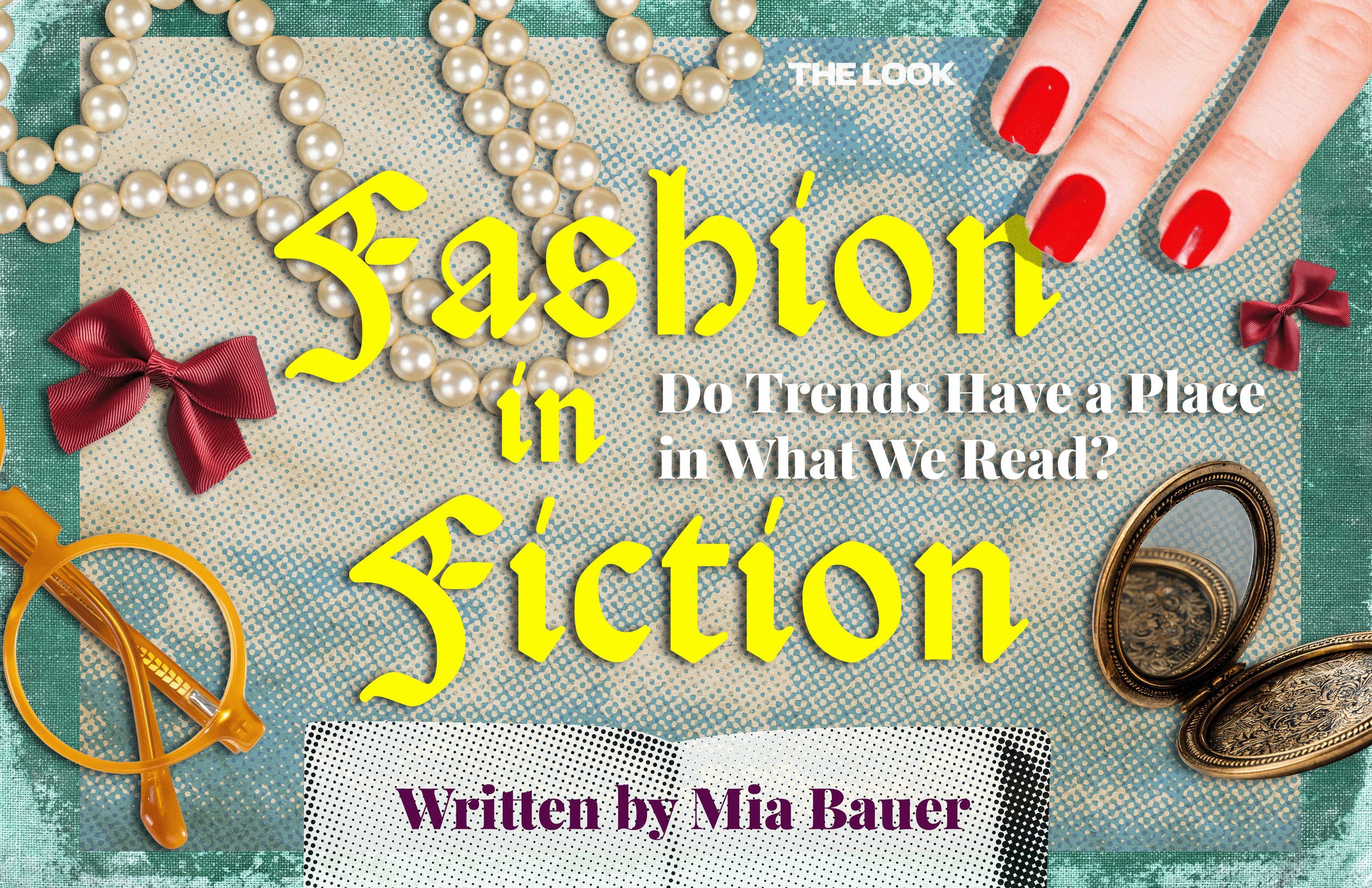Fashion in Fiction: Do Trends Have a Place in What We Read?
I buy and read books like members of The Look buy and wear clothes: in slight excess, wherever I can, and with an eye for the season.
Whether or not you read, we’re all intimately familiar with the ebb and flow of fashion trends. Something new goes in and out of style every six months or so, a radically quick turnaround to be perceived as “fashionable” or “in style.” At the intersection of fiction and fashion, it begs the question: do current trends have a place between the pages of your next read, and do classic works of literature deal with their own fashion trends?
When I initially came up with the idea to write about this, my kneejerk reaction was “no, fashion has no place in fiction. Think of the galaxy leggings and sunflower print sundresses that completely take you out of the story!”
Then, after thinking about it for longer than two seconds, I realized how necessary fashion is for most creative writing.
What I was actually reacting to were current fashion trends. Trends so unfortunate there is almost no likelihood they are going to be repeated in the future. The aforementioned galaxy leggings come from a tragic excerpt from Ali Hazelwood’s rom-com, Love on the Brain (2022) where she dresses her female main character, Bee, in “...a nose stud, galaxy leggings, and a white tank top” (Hazelwood, 171). The outfit is unfortunate; there’s no getting around that. Its only redeeming factor is what it says about her character: she is unapologetically herself and dresses the part. It’s an important building block for the reader and reinforces Bee’s appearance in tandem with her identity.
In most cases, fashion, not just current trends, are used to support a character’s identity, the setting, and the atmosphere. Historical fiction benefits from naming the intricacies of a Victorian woman’s garments the same way a murder mystery might benefit from describing how a certain pair of men’s cufflinks point to the perpetrator.
In Suzanne Collins’ Hunger Games (2008), fashion was paramount to the plot and hierarchy of the Districts. The extravagant and lavish dress of District 1 starkly juxtaposes the poorer working classes of Districts 11 and 12, a clearcut class divide and easy window into the environment the characters were inhabiting. District 1 specializes in luxury goods, District 11 in agriculture, and District 12 in coal-mining. Each of the twelve feed into the Capitol, a gross display of opulence and wealth shamelessly funded at the expense of the Districts. When Katniss and Peeta first embark on the Tribute train into the Capitol, Katniss remarks on “...the oddly dressed people with bizarre hair and painted faces who have never missed a meal” (Collins 59). Later, when the Tributes make their first appearance to the public, Katniss eyes District 1’s ensemble, “[looking] so beautiful, spray-painted silver, in tasteful tunics glittering with jewels…they are always favorites” (Collins 69). Even without a picture of Katniss’s own attire, the reader gets the impression that colors, jewels, and excess are not normal for her. Her pointed observation about “...faces who have never missed a meal” alludes to her personal experiences with hunger and poverty. Collins was intentional in distinguishing the Districts based on fashion; it links to their social status while simultaneously serving as a plot device that stretches the already-wide gap between Districts, creating an “us vs. them” dynamic.
The Hunger Games is already being lauded as a modern classic; while it may not use our contemporary fashion, it uses fictional trends and styles as a plot device. Many classic literary novels explore fashion in a reserved manner, or very sparingly. There is a presumption that the trends of the era are understood. The Wind in the Willows (1908) by Kenneth Graham is a lovely example of clothing being explored in a narrow set of circumstances. Graham’s delightful children’s novel about anthropomorphic animals living in the woods is full of whimsy and adventure. If the animals are ever described wearing clothes, very little description is provided; however, on one adventure, Toad strikes a deal and escapes from prison dressed as a laundry maid, complete with the “...cotton print gown…apron…shawl, and a rusty black bonnet” (Graham, 85). This example does not have the same complex effect as fashion does in The Hunger Games, but nonetheless, Graham uses era-specific trends to push the story forward.
Ultimately, it’s up to authors to incorporate contemporary trends as they see fit, although potentially at the risk of smothering any chance of longevity. When done well, books that use fashion often employ universal, overarching themes that strike at the human condition. Perhaps the increase of fashion in fiction within the literary landscape signals an increase in our value of material goods.
Source List:
Collins Suzanne. The Hunger Games. Scholastic 2008
Graham Kenneth. The Wind in The Willows. Oxford 1908
Hazelwood Ali. Love on the Brain. Berkley 2022
https://www.merriam-webster.com/dictionary/trend
Written by: Mia Bauer
Cover Design: Natalia Paredes

